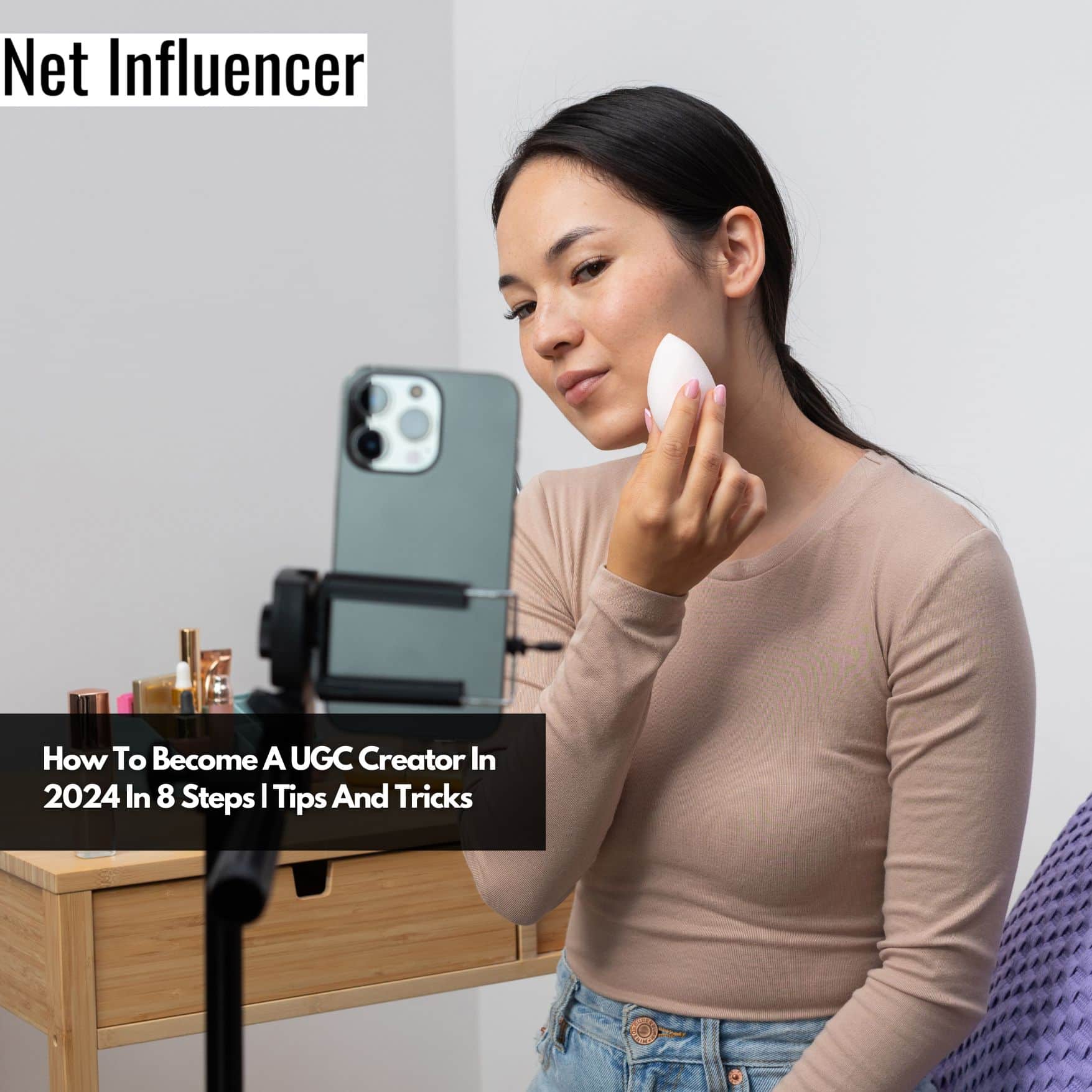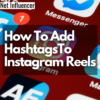Influencer
How To Become A UGC Creator In 2024 In 8 Steps | Tips And Tricks
Let’s engage in a thought exercise. On the one hand, you have a polished brand video advertisement. On the other hand, you have a video created by one of their customers talking about how much their products benefited them. Which of these videos is more likely to sway your purchase decisions?
Probably the latter, according to 90% of consumers. Enter: paid user-generated content (UGC), allowing consumers to create authentic content advocating for brands while getting paid to do so.
The best part about being a UGC creator? You don’t need a large following to become one. Let’s explore how you can kick-start your UGC creator journey.
But, first..

What is a UGC Creator?
User-generated content (UGC) is content created by the users of a certain product or service rather than the brands themselves. With UGC, consumers create unpaid content that promotes products/ services simply because they love the brand. Anybody who creates UGC content is known as a UGC creator.
But, a paid UGC creator is someone who is paid by brands to create authentic content that looks like it was made by a real consumer. Instead of waiting for their consumers to post UGC, brands hire UGC creators to influence the purchase decisions of potential customers.
The most common types of UGC content include:
- Unboxing videos
- Demo videos
- Reviews or Testimonials
- Videos of the product in action
- Photos of the creator using the product
Influencers vs. UGC Creators
Brands hire influencers for the content and the ready-made niche audience that they provide.
UGC creators, on the other hand, are hired to play the role of real consumers. The type of content they create needs to ultimately send this message: I am a consumer of this brand who loves their products. UGC creators don’t need to have a ready-made audience; their content just needs to be authentic enough to influence others.
Another notable difference is that the content created by influencers is published on their own pages, while UGC is published on the brand’s pages. Influencer-made content also needs to be high quality, while this isn’t a requirement for UGC. Why? Because you’re mimicking content created by real consumers and most of them aren’t pros at filming and editing videos.
How Much Do UGC Creators Make?
Much like influencers, the amount of money that UGC creators make varies according to niche, platform, collaboration type, and market demand.
But, here’s an estimate of how much you can earn per video as a UGC creator according to Collabstr:
| Platform | Earnings per video |
| YouTube | $2,000 – $10,000+ |
| $500 – $5,000+ | |
| TikTok | $500 – $5,000+ |
| $500 – $2,000+ | |
| X (formerly Twitter) | $200 – $2,000+ |
| $200 – $2,000+ |
The key to earning higher is establishing yourself!
Tools You Need To Get Started With UGC Creation
The barrier to become a UGC creator is low as you don’t need a fancy camera that costs thousands of dollars to get started. All you need is a:
And you’re good to go!
How To Become a UGC Creator in 8 Steps
Here’s a step-by-step process on how you can become a UGC creator. Fair warning, though. It’s not an overnight process; you have to be willing to invest your time and efforts. With that being said, let’s dive in!
1. Set up UGC-specific social media profiles
Although this isn’t a hard requirement, creating UGC-specific profiles on the platforms you want to create content for provides many benefits in your UGC creator journey. It helps you:
- Build an online brand as a UGC creator, making it easier for companies to discover you
- Network with other UGC creators and learn best practices
- Learn how the platform algorithm works
- Understand your target audience’s preferences
Make it clear in your bio that you create UGC. However, using the words “UGC creator” may put off users from following you because everyone craves authenticity. Instead, try something like, “I post authentic reviews about brands I love.” You can also mention that you’re open to collaborating with brands.
When posting your content, you can use UGC-related hashtags such as #ugc or #ugccreator so that your account will pop up when brands search for UGC creators based on these hashtags.
2. Pick a niche
Picking a niche or category will help you build authority over that niche, making you one of the go-to creators for brands within that niche. You also get to understand your target audience’s preferences and pain points better, allowing you to create UGC content that resonates with users more. Think of it as fishing in a small pond versus the ocean- you’re more likely to catch fish in the former scenario.
But how do you pick a niche? Think of things that you really love and know a good deal about. Pick an industry that’s neither too broad nor too narrow. It could be anything- like fashion, beauty, cooking, beverages, or even something broad like sustainability. If you pick cooking, you can target brands that sell perishables, kitchen essentials, foods, desserts, and so on.
3. Learn how to create UGC videos
UGC is unique in the sense that it’s technically content created by consumers of a brand. So, when you’re just getting started, it might help to create content around a product that you really loved using. Just set up your filming equipment and start practicing with products that you already use.
Look at content created by other UGC creators and analyze whether they are persuasive enough. Note down what they are doing right and apply it to your own videos.
You also need to learn basic video editing skills. Keep in mind that UGC videos typically run from 15-60 seconds. And keep practicing!
4. Put together a portfolio
Here’s where all that practicing will finally pay off! You can use something like Canva or Passionfroot, or even let your UGC-specific profile double up as a digital portfolio.
Include a brief summary about how your UGC videos provide value by touching on user pain points and demonstrating the benefits of the products. Finally, add information about the types of UGC that you offer.
5. Set your rates
Before you start pitching your services, you need to set your rates for each type of UGC content you offer. Factor in things like the time it takes for you to create the content, type and length of the video, and the value you will be providing to your clients, and determine rates based on that.
It’s okay to start small, say $100 per video. Once you establish yourself and have proof of the value your videos provide (an increase in purchases and ROI), you can use the metrics to charge more.
6. Join UGC creator platforms
There are several UGC creator platforms that act as the middlemen between brands and UGC creators. Once you sign up to the platforms, they will pair you up with brands that are looking to create UGC content. These platforms are a great way to find your first clients and get your foot in the door.
Here are some UGC creator platforms that you can try out:
- TRIBE
- JoinBrands
- Trend
- Influee
- Brands Meet Creators
- Insense
- The Right Fit
- Thingtesting
- UGC Shop
- Billo
7. Pitch yourself to brands
Once you gain some solid experience, you can start pitching brands you love directly instead of going through UGC creator platforms or waiting for brands to come to you!
Create a list of brands you want to work for, log in to LinkedIn and find information about the person responsible for hiring UGC creators (typically a social media/ creative director), and send them an email or DM pitching your services.
Here’s an example that doubles down as a template:
“Hi, XYZ.
I’m a long-time customer of your brand, and I love your foam pillows in particular. Since I started using it, I’ve been sleeping better and no longer get any headaches!
I’m actually a UGC creator and would love to create a video talking about the benefits of your foam pillows. The previous UGC video I made for ABC brand increased conversions by 50%!
Here’s my portfolio: [insert link]. Let me know when we can discuss this further.
Thank you!”
A good pitch should show genuine interest in their products, include info about the value you will bring, and have a link to your portfolio.
8. Set up a contract, start creating, and get paid!
Once you’ve bagged a client, it’s time to hash out the details in a clearly-defined contract and start creating.
Finally, don’t forget to track the results of the content you create and use this to improve.





















